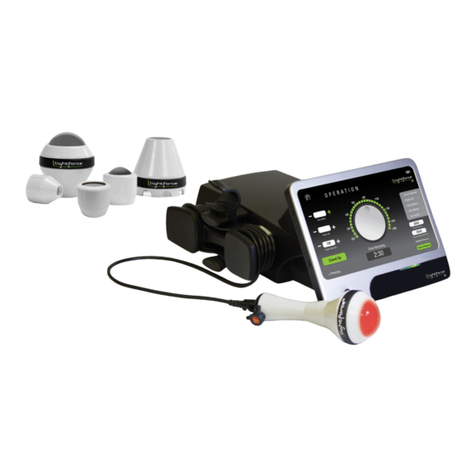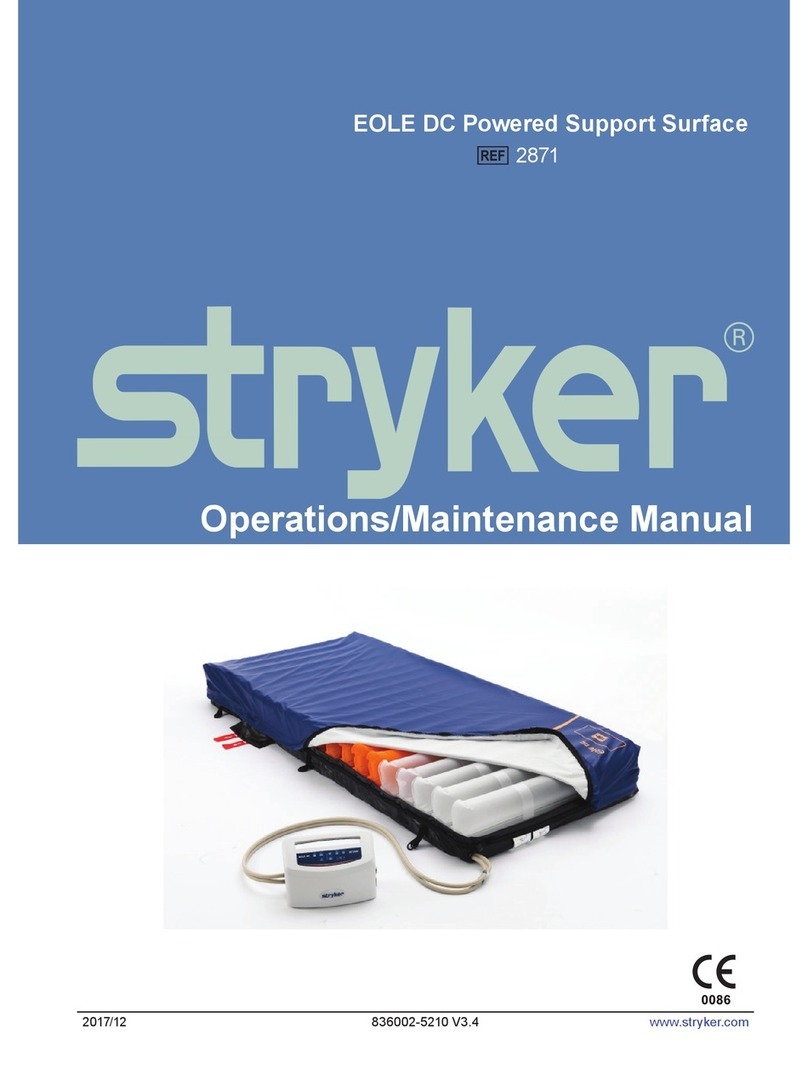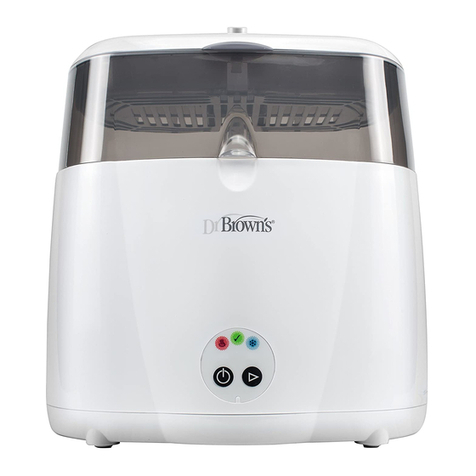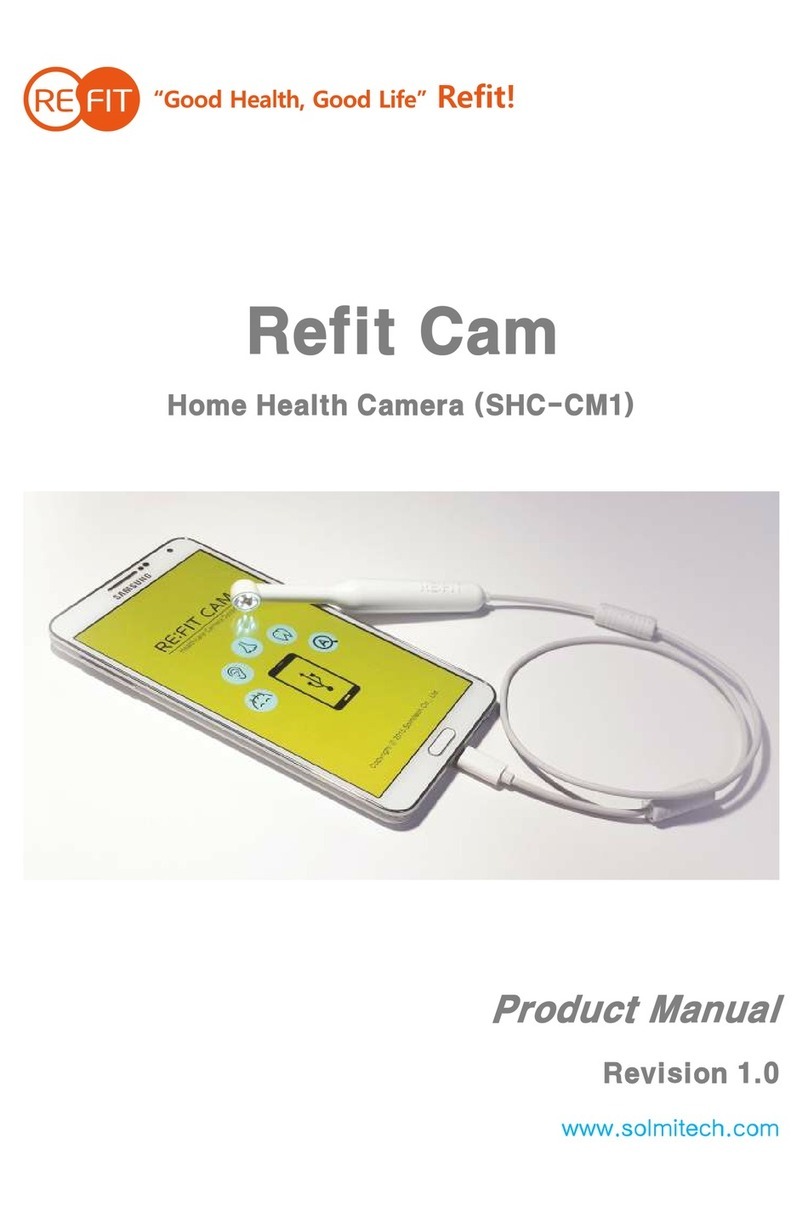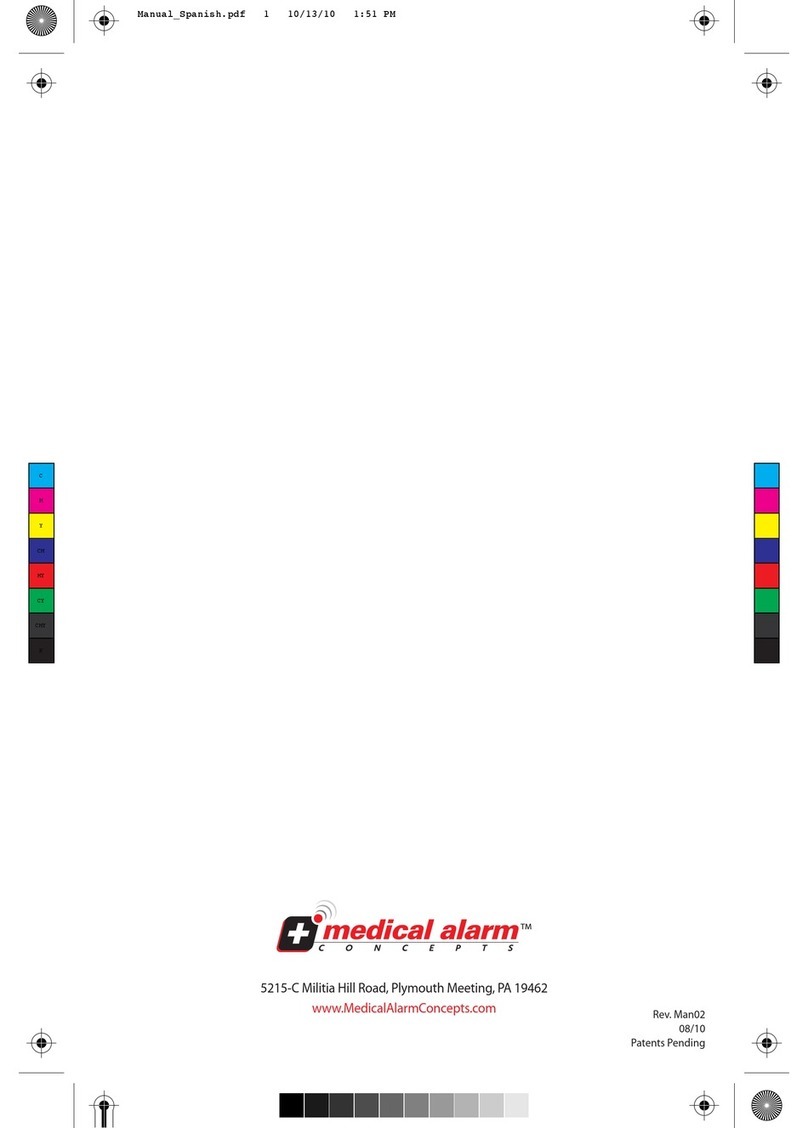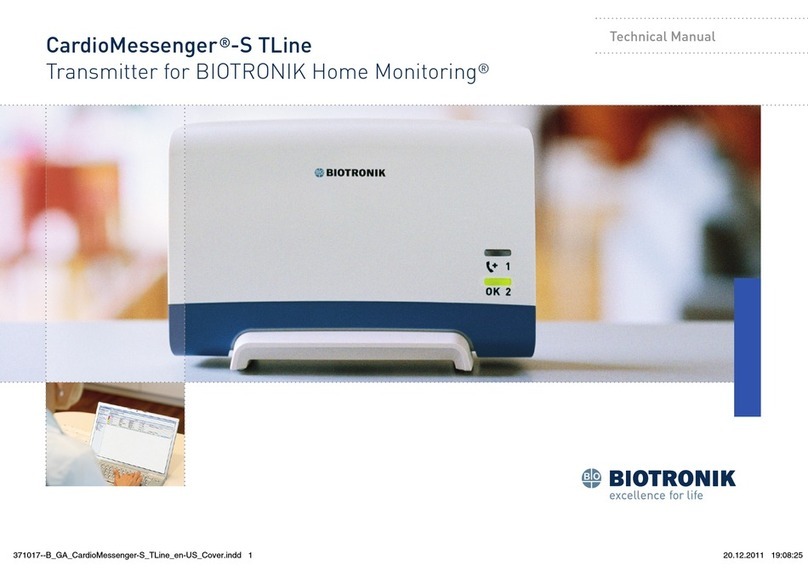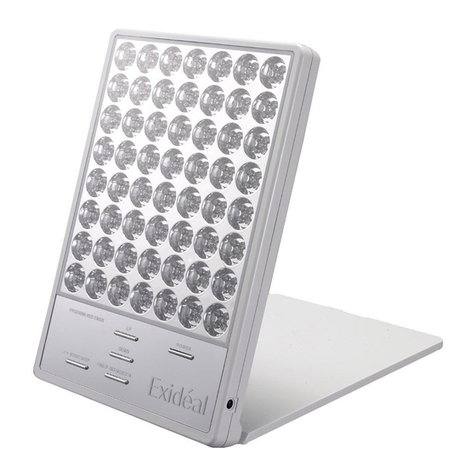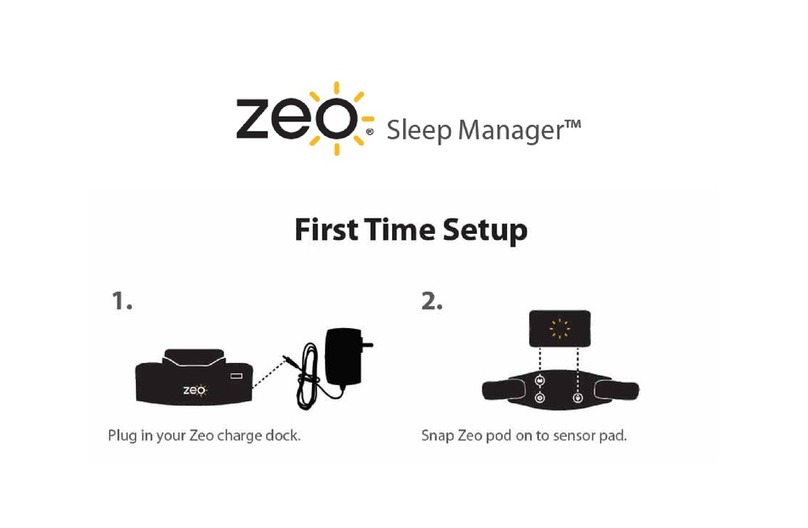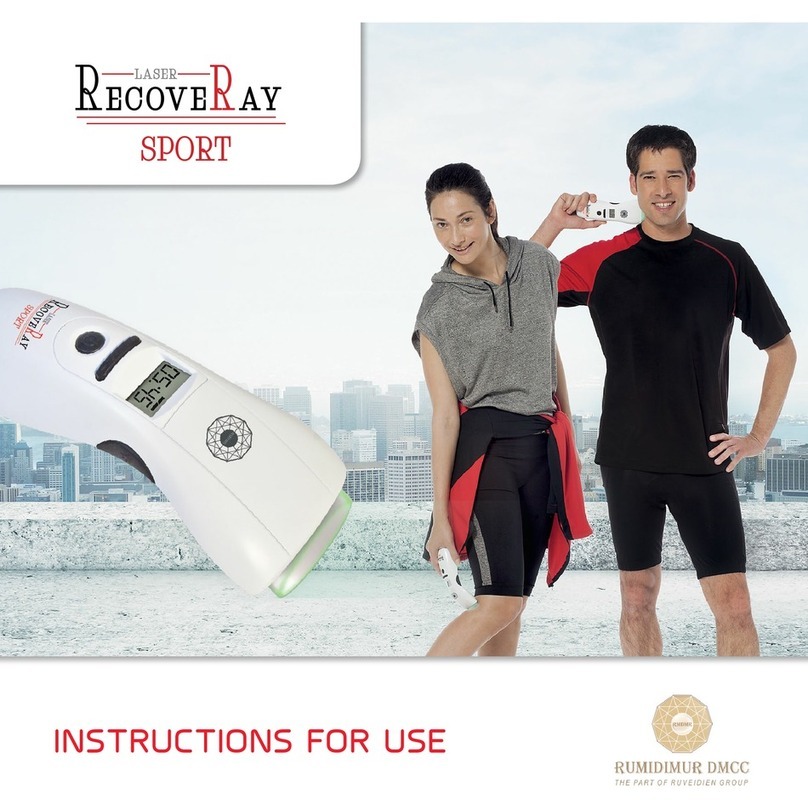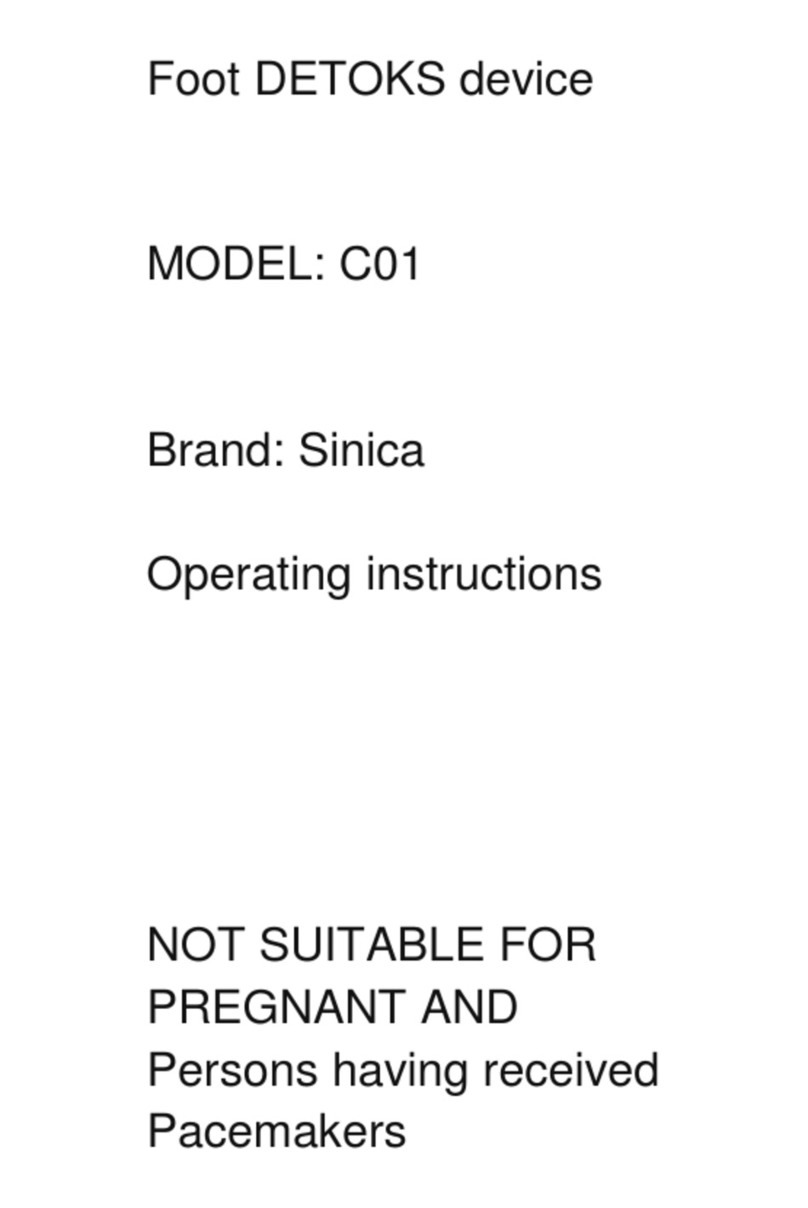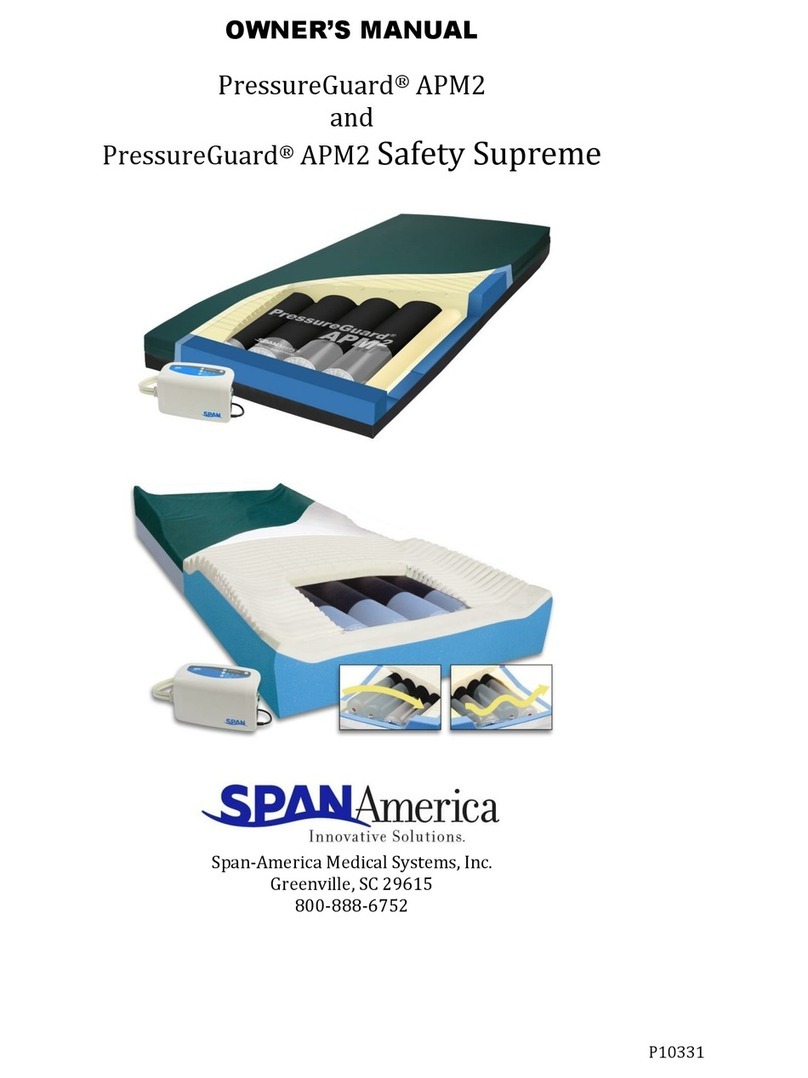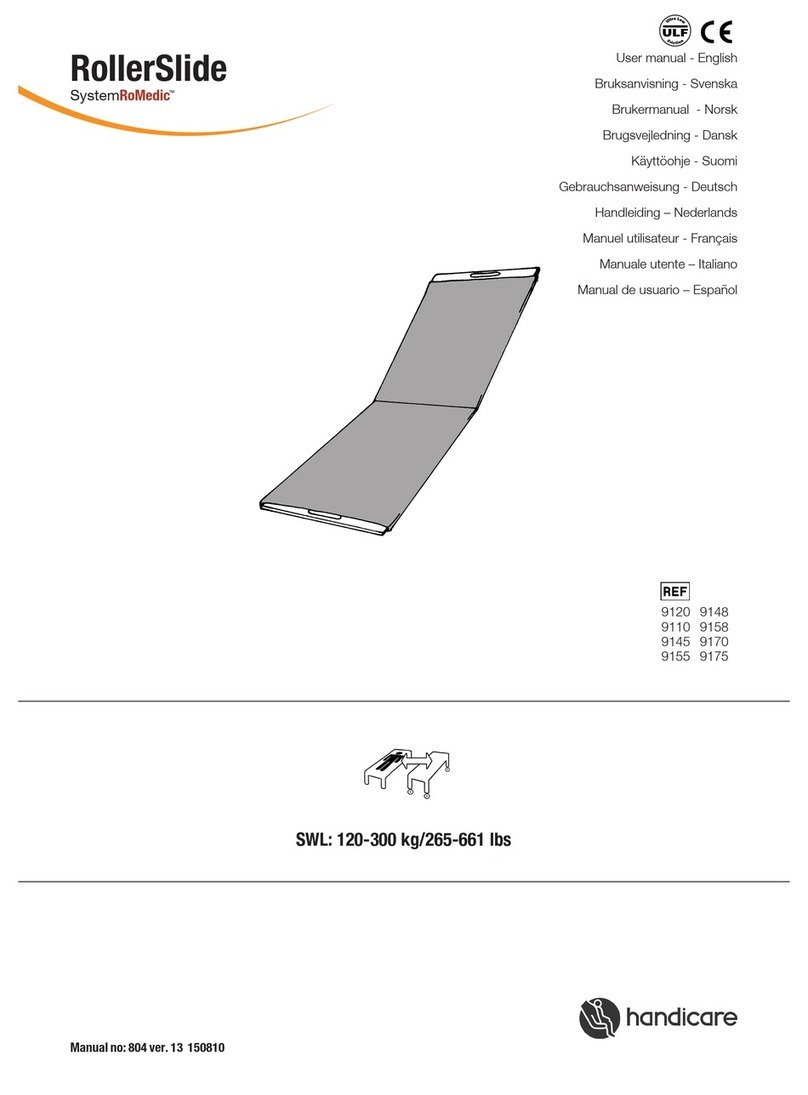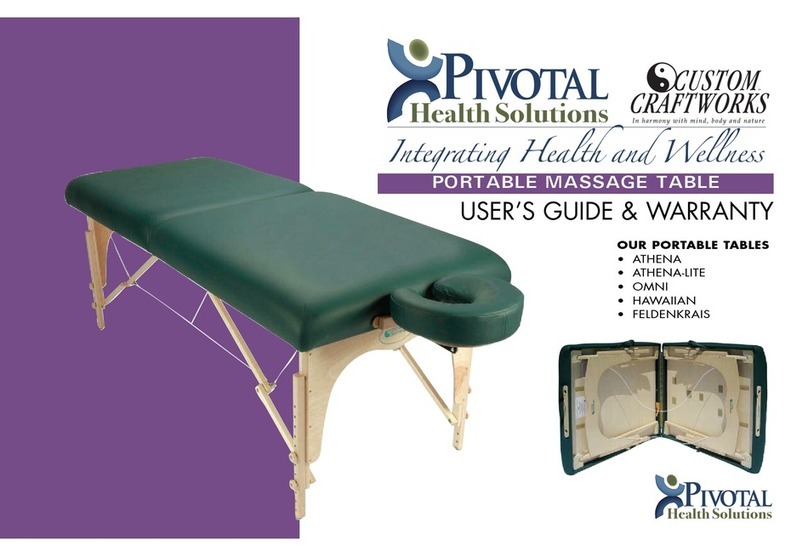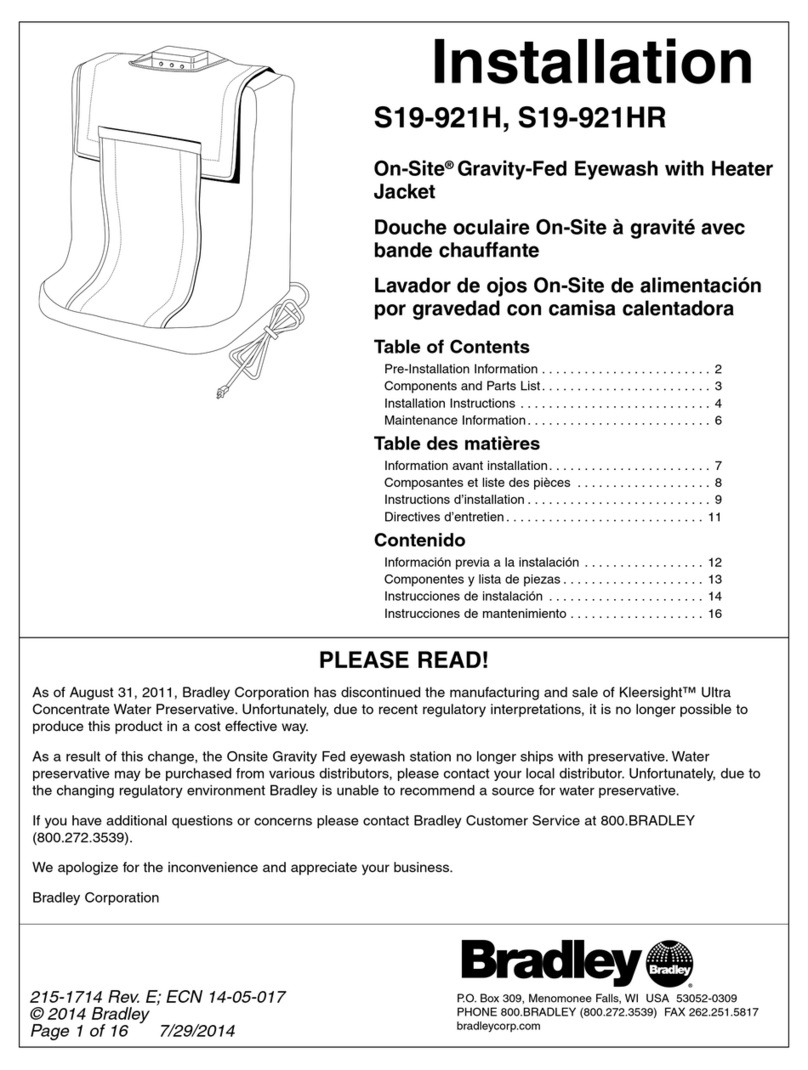CardioMessenger II-S Introduction 3
Introduction
Dear patient:
You have received a pacemaker or implantable
cardioverter-defibrillator (ICD) with the
additional Home Monitoring function by
BIOTRONIK. With Home Monitoring, the state
of your heart's health and your implant are
surveyed on a daily basis while you are at
home. Your physician can catch up at regular
intervals on how your heart is doing.
How Home Monitoring works
Your implant is equipped with a special
transmitter (1). Usually at night, the
transmitter sends daily information on your
heart to the patient device, your
CardioMessenger (2).
The transmission power from your implant is
low and does not impair your health in any way.
Its limited transmission range, however,
requires the use of the CardioMessenger.
The CardioMessenger collects the information
received from the implant and automatically
CardioM essenger_II-S_en.book Page 3 T uesday,May6,2008 1:11 PM
